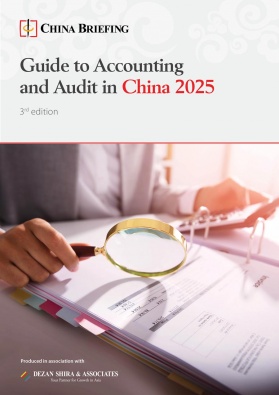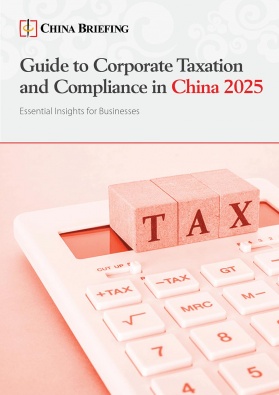Asia Transfer Pricing Brief: Q2 2025
In our Asia Transfer Pricing Brief for Q2 2025, we highlight the latest transfer pricing developments across Asian markets:
- On May 9, the OECD released the latest version of its Consolidated Commentary on the Global Minimum Tax (Pillar Two GloBE rules) and the accompanying Illustrative Examples.
- On June 6, 2025, Hong Kong enacted the Inland Revenue (Amendment) Ordinance 2025 to implement the global minimum tax and the Hong Kong minimum top-up tax in accordance with the GloBE rules under Pillar Two framework.
- On 28 June 2025, the G7 issued a statement outlining a proposed “side-by-side” solution for global minimum tax arrangements that would allow the US minimum tax system to operate alongside the Pillar Two rules.
Pillar Two: Updated version of Consolidated Commentary and illustrative examples released
On May 9, 2025, the OECD/G20 Inclusive Framework on BEPS (“OECD inclusive framework”) published an updated version of its Consolidated Commentary to the Pillar Two global minimum tax model rules and an updated set of examples illustrating the application of the model rules to certain fact patterns.
The updated version of the Consolidated Commentary incorporates the various pieces of administrative guidance that were approved and published by the OECD inclusive framework before the end of March 2025. The previous version of the Consolidated Commentary was released in April 2024 and incorporated guidance approved and published by the OECD inclusive framework before the end of December 2023.
Key changes are summarized below:
Full refinement and landing of the GloBE Information Reporting (GIR)
The Global Minimum Tax not only requires the calculation of the top-up tax, but also requires companies to file a standardized GIR to report the detailed calculation process and data to the relevant tax authorities. This report is the basis for tax administration and enforcement.
The 2025 edition of the Consolidated Commentary and its accompanying updates incorporate detailed guidance on the GIR that was released on January 15, 2025. This guidance provides in-depth explanations of every data point and every form panel of the GIR, including where the data comes from, how it is calculated, and how it is reported under various specific circumstances (e.g., reorganizations, accounting treatment differences, etc.).
Further clarification and limitations on Deferred Tax Asset (DTA) treatment rules
Deferred tax assets and liabilities (DTAs and DTLs) are one of the most complex parts of the GloBE rules as they relate to timing differences between accounting and tax and how the tax effects of those differences are incorporated into the calculation of the GloBE effective tax rate.
The 2025 edition of the Consolidated Commentary consolidates the guidance issued on January 15, 2025 on the treatment of specific types of DTAs, particularly those that result from deferred income taxes arising from “governmental arrangements”. The OECD noted that some jurisdictions may offer incentives allowing companies to recognize large DTAs prior to GloBE’s implementation and benefit from their reversal afterward—potentially artificially lowering GloBE effective tax rates.
To address this base erosion risk, the update, the updated guidance clarifies that DTAs generated after a certain date or arising from certain governmental arrangements may face limitations when calculating GloBE Covered Taxes. More critically, the guidance details limitations on using qualifying pre-existing DTAs during the Transitional Period. For example, DTAs originating from certain specific governmental arrangements may only be included in the calculation of the Transitional Effective Tax Rate at 20 percent of their original amount, even if they are eligible, and such inclusion is subject to an annual cap.
Dynamic updating of the Central Record of Qualified Legislation (CRQL)
The GloBE rules permit jurisdictions to adopt a Qualified Domestic Minimum Top-Up Tax (QDMTT). If a country’s QDMTT is recognized as “qualified” by the OECD, the QDMTT paid by multinationals in that country can be credited against any top-up taxes liabilities under the Income Inclusion Rule (IIR) or Undertaxed Profits Rule (UTPR) in other jurisdictions. The OECD maintains a “central record” of countries whose IIR, UTPR, or QDMTT legislation it considers to be qualified, including those granted “transitional qualified status.” This list is continuously updated and available on the OECD website.
The 2025 edition of the Consolidated Commentary incorporates the latest information on qualified legislation from this central record, although the official list is maintained and published separately.
Hong Kong: Implementation of global minimum tax and Hong Kong minimum tax under the Pillar Two framework
On June 6, 2025, Hong Kong enacted the Inland Revenue (Amendment) (Minimum Tax for Multinational Enterprise Groups) Ordinance 2025 (“Amendment Ordinance”) to implement the global minimum tax and the Hong Kong minimum top-up tax (“HKMTT”) in accordance with the Global Anti-Base Erosion (“GloBE”) rules under Pillar Two of the OECD’s Base Erosion and Profit Shifting (“BEPS”) 2.0 framework.
The implementation of the GloBE and HKMTT regimes, which seek to ensure that in-scope multinational enterprise (“MNE“) groups pay a minimum tax of 15 percent in respect of the profits derived from every jurisdiction in which they operate and are in force as of 1 January 2025, marks a new era of the tax paradigm for large MNE groups having a presence in Hong Kong.
Applicability
The GloBE and HKMTT regimes apply to MNE groups, i.e., groups which include at least one entity or permanent establishment that is not located in the jurisdiction of the ultimate parent entity (“UPE”), with annual consolidated revenue of at least EUR 750 million in at least two of the four preceding fiscal years. Individual taxpayers, purely domestic groups, small and medium enterprises, investment entities and insurance investment entities, and other excluded entities are not subject to the GloBE or HKMTT rules.
Charging mechanism
Under the Amendment Ordinance, top-up tax will be imposed on in-scope MNE groups through the following charging rules:
(1) Income inclusion rule (“IIR”)
If the effective tax rate (“ETR”) of the MNE group’s constituent entities in any foreign jurisdiction is below 15 percent, a top-up tax will be imposed using a top-down approach to bring the ETR to 15 percent. The top-up tax under the IIR is imposed on:
- for an MNE group headquartered in Hong Kong, its UPE;
- for an MNE group headquartered outside Hong Kong with its UPE located in a jurisdiction that does not implement the IIR, its Hong Kong intermediate parent entity; or
- the Hong Kong partially-owned parent entity of an MNE group irrespective of whether its UPE or intermediate parent entity is required to apply the IIR.
(2) Undertaxed profits rule (“UTPR”)
The UTPR works as a backstop to ensure that any residual amount of top-up tax not brought into charge under the IIR will be allocated to and charged in jurisdictions where the MNE group has presence.
The top-up tax under the UTPR is imposed on the Hong Kong constituent entities of an MNE group in the form of an adjustment equivalent to a denial of deduction, in an amount equal to the UTPR top-up tax allocated to Hong Kong based on a prescribed formula.
(3) HKMTT
The HKMTT is imposed on Hong Kong constituent entities (as well as standalone joint ventures (“JVs”) or members of JV groups in Hong Kong) of an MNE group if its ETR in Hong Kong is below 15 percent.
The HKMTT is designed to meet the requirements of a QDMTT so that top-up tax paid thereunder will be creditable against liabilities otherwise arising under the IIR and UTPR. In other words, the HKMTT is imposed as priority over the IIR and UTPR top-up tax.
The jurisdictional ETR of an MNE group is calculated by dividing adjusted covered taxes by GloBE income, aggregated per jurisdiction. The top-up tax rate (i.e., difference between 15 percent and the jurisdictional ETR) is then applied to the GloBE income, after deducting a substance-based income exclusion, of that jurisdiction, to arrive at the top-up tax payable in that jurisdiction.
The IIR and HKMTT rules take effect retrospectively from January 1, 2025, while the timeline for implementing the UTPR will be further announced.
Tax residency of a constituent entity
Because the top-up tax depends on where a constituent entity is located, determining the location is critical. For purposes of the GloBE and HKMTT rules, an entity is taken to be located in a jurisdiction where it is a tax resident or where it was created.
Previously, the IRO did not contain a definition of “tax resident” as Hong Kong does not impose profits tax on the basis of residence or domicile. To fill the gap, the Amendment Ordinance provides that an entity will be a tax resident in Hong Kong if it is
- incorporated in Hong Kong (or constituted under the laws of Hong Kong if the entity is not a company); or
- normally managed or controlled in Hong Kong.
This definition applies retrospectively from January 1, 2024. This allows an entity that falls within the definition to be regarded as located in Hong Kong throughout the fiscal year of 2024, so that it will not be charged top-up tax by another jurisdiction which has implemented the GloBE rules for an accounting period beginning on or after January 1, 2024.
Since the Companies (Amendment) (No. 2) Ordinance 2025 took effect on May 23, 2025, a non-Hong Kong company re-domiciled to Hong Kong will be deemed to be a company incorporated in Hong Kong and therefore may be regarded as a Hong Kong tax resident for purposes of the GloBE and/or HKMTT rules.
Safe harbor provisions
The Amendment Ordinance incorporates all four types of safe harbors provided under the GloBE rules. Subject to annual elections and meeting relevant conditions, in-scope MNE groups may be relieved from full GloBE calculations under the following safe harbors:
(1) Transitional country-by-country reporting safe harbor
The top-up tax of an in-scope MNE group for a jurisdiction will be deemed to be zero if, by reference to data from a qualified country-by-country report, any of the following tests is met:
- “De minimis test”: The MNE group has total revenue of less than EUR 10 million and profit before income tax of less than EUR 1 million (or loss before income tax) in that jurisdiction;
- “Simplified ETR test”: The simplified ETR in that jurisdiction is at least 16 percent for a fiscal year starting in 2025 or at least 17 percent for a fiscal year starting in 2026; or
- “Routine profits test”: The profit before income tax does not exceed the substance-based income exclusion amount for that jurisdiction.
This safe harbor only applies to the transition period covering fiscal years beginning on or before December 31, 2026 and ending on or before June 30, 2028. This safe harbor adopts a “once out, always out” approach, meaning that if an MNE group has not applied this safe harbor in respect of a jurisdiction in a previous fiscal year, it cannot qualify for this safe harbor for that jurisdiction in a subsequent fiscal year.
(2) Transitional UTPR safe harbor
Where the UPE of an in-scope MNE group is located in a jurisdiction with a corporate income tax rate of at least 20 percent, the UTPR top-up tax amount calculated for the UPE jurisdiction will be deemed to be zero. This safe harbor only applies to the transition period covering fiscal years beginning on or before December 31, 2025 and ending on or before December 31, 2026.
(3) QDMTT safe harbor
The jurisdictional top-up tax of an in-scope MNE group will be deemed to be zero if the MNE group is subject to a QDMTT of that jurisdiction. Therefore, so long as the HKMTT remains a QDMTT, Hong Kong constituent entities of an in-scope MNE will generally only need to undertake the HKMTT calculations and will not be required to perform additional GloBE calculations for Hong Kong, unless a disqualifying condition applies.
(4) Simplified calculations safe harbor for non-material constituent entities (“NMCEs”)
Under this safe harbor, a filing constituent entity may elect to use simplified calculation methods to determine the GloBE income or loss, GloBE revenue and adjusted covered taxes of an NMCE, which broadly refers to a constituent entity which has not been consolidated in the UPE’s consolidated financial statements solely due to size or materiality, provided that the specified conditions are met.
Anti-avoidance provisions
Section 61A of the IRO (Hong Kong’s general anti-avoidance rule) applies to GloBE and HKMTT with modifications. In determining whether a transaction was entered into solely or dominantly to obtain a top-up tax benefit, consideration will include:
- whether any change in top-up tax liability of a constituent entity or group has resulted, will result, or is reasonably expected to result; and
- whether the result contradicts the intended outcomes under the GloBE rules.
G7 reach agreement on global minimum tax
On June 28, 2025, the G7 issued a statement outlining a proposed “side-by-side” solution for global minimum tax arrangements that would allow the US minimum tax system to operate alongside the Pillar Two rules.
The G7 leaders expressed a shared understanding that this approach could preserve the progress made under the OECD/G20 Inclusive Framework in tackling base erosion and profit shifting (BEPS), while offering greater stability and predictability for the international tax system. This understanding is grounded in the following principles:
- A side-by-side system would fully exclude US parented groups from the UTPR and the IIR in respect of both their domestic and foreign profits;
- It would include a commitment to address any substantial risks to a level playing field or increased BEPS risks, to maintain shared policy goals;
- Development of the side-by-side system would proceed alongside efforts to simplify the administration and compliance framework under Pillar Two; and
- The work would also include a review of the treatment of substance-based non-refundable tax credits under Pillar Two to ensure alignment with refundable credits.
This proposed framework is intended to facilitate progress on broader international tax issues, including digital taxation and the preservation of national tax sovereignty. The G7 emphasized that these discussions are relevant to a wider group of jurisdictions and should continue within the Inclusive Framework, with the goal of reaching an acceptable and implementable solution.
Meanwhile, Section 899, a proposed provision that would have authorized the U.S. president to counter “unfair foreign taxes,” was removed from the One Big Beautiful Bill Act. This decision aligns with the understanding between the U.S. Treasury and G7 partners that OECD Pillar Two rules will not apply to U.S.-headquartered groups. Its removal is seen as critical to providing a more stable foundation for global tax negotiations.
Looking ahead, rebalancing global tax rules through multilateral agreements will be key. This presents the OECD with a pivotal opportunity to deliver a simpler, fairer international tax regime—one that reduces excessive compliance burdens and supports a more level playing field across jurisdictions.
About the Brief:
Asia remains one of the world’s primary investment hubs, attracting an increasing number of businesses that have either expanded or are contemplating expansion into its high-performing emerging markets. For multinational enterprises (MNEs), transfer pricing is an important issue that demands attention sooner or later.
Transfer pricing concerns the pricing arrangements between associated enterprises (AE) operating in different tax jurisdictions for their intercompany transactions. In alignment with international regulations, Asian taxpayers engaged in transactions with other group entities must substantiate that these dealings adhere to the “arm’s length standard.” This standard necessitates taxpayers to prove that their transactions with related parties mirror those with third parties in a similar manner and under comparable conditions.
Nevertheless, the transfer pricing landscape has grown more complex in recent years and can be challenging for MNEs to navigate successfully. Apart from the international transfer pricing initiatives spearheaded by the Organization for Economic Co-operation and Development (OECD), individual governments are intensifying their own tax and regulatory frameworks overseeing transfer pricing. This heightened focus aims to protect their tax revenue amid financial constraints caused by the three-year COVID-19 pandemic and to manage domestic jurisdiction compliance in a dynamic global business environment.
In this scenario, it is crucial for foreign investors to stay on top of international and regional transfer pricing updates in order to effectively address their global transfer pricing concerns. Consequently, starting Q3 2023, our team of Dezan & Shira transfer pricing and tax professionals has taken the initiative to produce a quarterly Asia Transfer Pricing Brief. This brief will succinctly summarize timely transfer pricing news, aiming to provide you and your Asia-based business with a strategic advantage in managing international taxation issues and ensuring compliance.
Dezan Shira & Associates’ transfer pricing practice helps companies conduct transactions with related parties to deal with transfer pricing issues. The services provided by our tax professionals are comprehensive and tailored to each client’s individual needs, often arising from the uniqueness of their business operations. For any support regarding transfer pricing documentation, benchmark study, tax audits, and transfer pricing policy monitoring, please contact China@dezshira.com.
Also Read:
- Transfer Pricing Documentation in China: Common Pitfalls and Best Practices
- China Monthly Tax Brief: May 2025
- China Manufacturing Tracker 2025
- Previous Article Breaking Down the US-China Trade Tariffs: What’s in Effect Now?
- Next Article







